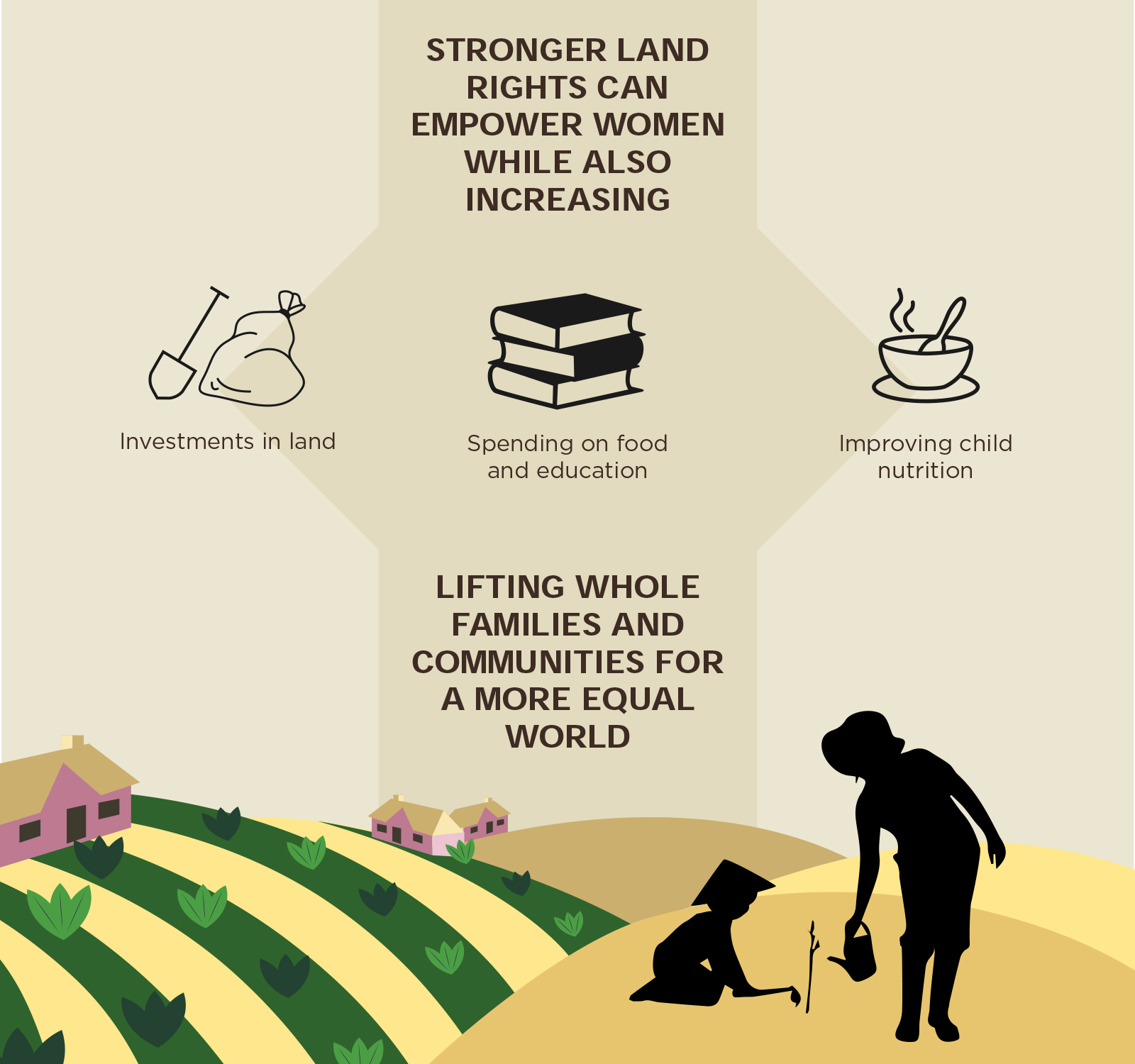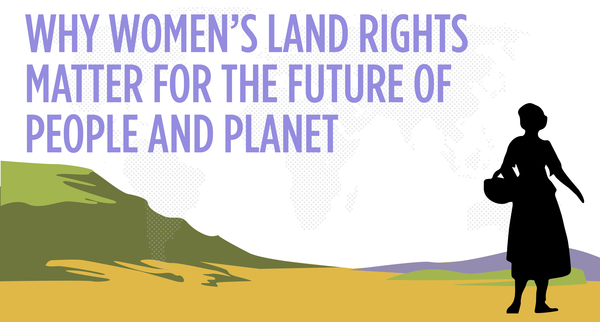
By Karol Boudreaux, Landesa Chief Program Officer
In rural areas around the world, the face of a farmer is increasingly a woman’s.
From the paddy terraces of Asia to the maize fields of sub-Saharan Africa, she will till, plant, water, and harvest crops that feed her household and whole communities.
According to the International Labour Organization’s 2017 World Employment Social Outlook, 30 percent of working women worldwide are employed in agriculture. The share of women working in agriculture rises to 57 percent in sub Saharan Africa and 60 percent in South Asia — in both instances exceeding the share of men working in farming.
And yet, less than 15 percent of landholders worldwide are women — a disparity that prevents millions of rural women from realizing their full potential.
This week, as people across the globe observe Rural Women’s Day (Oct. 15), World Food Day (Oct. 16), and the International Day for the Eradication of Poverty (Oct. 17), it’s crucial to note a common thread running through all three: land.

When women have secure rights to land, they have the opportunity and peace of mind needed to make investments in their land to improve their harvests and their lives.
The opportunity comes, first, from being recognized as a legitimate farmer. In many countries, farmers are defined as those who own land. Without this recognition, women are less able to access agriculture supports — like credit, subsidies, crop insurance, and agriculture extension. Land rights open these doors.
And the peace of mind comes from knowing that their rights to land are secure — that their land cannot be taken away from them as soon as they’ve made the investments that increase its value and desirability. These long-term investments in land can boost productivity and promote sustainable farming practices, sowing seeds for climate resilience and a food secure future, for rural women and for the world.
Research shows that women with secure rights to land have higher incomes and are more likely to have individual savings; women are also more likely to invest their wealth back into their families, through spending on household nutrition, healthcare, and school fees, as well as improvements to their farms.
But despite the potential to improve outcomes for women, their families, and whole communities, land rights are still not equitably distributed to all. Instead, discriminatory customs and practices, limited access to justice, and a lack of legal awareness leave millions of women unable to exercise their rights to the land they depend on for a living, even when those rights are protected by law.
The good news is, there’s a growing movement to close this gap between law and practice and help millions of women realize land rights in their daily lives.
Architects of the UN Sustainable Development Goals (SDGs) have specifically named land tenure rights in SDGs 1, 2, and 5, relating to poverty, food security, and gender equality, recognizing their fundamental importance in improving lives and livelihoods. And land is implicated in SDGs 10, 11, 13, 15, and 16, relating to inequality, sustainable cities, climate change, land degradation, and strong governance; land is an “ecosystem” within the SDGs. The SDGs have helped shine a spotlight on land rights in global fora and spurred innovation at the grassroots level.
A new global campaign, Stand For Her Land, is activating allies among government officials, advocates, nonprofit leaders, researchers, and social scientists to implement progressive and gender-sensitive land laws at the country level.
With momentum on our side, we can realize women’s equal rights to land in our lifetime.
You can be a part of the solution. To take action, visit our Women’s Land Resource Center and help spread the word about why women’s land rights matter — for the future of people and the planet.


